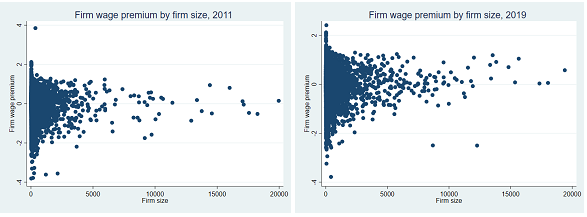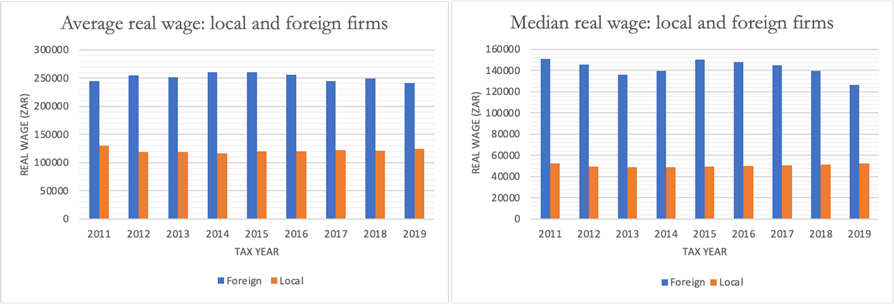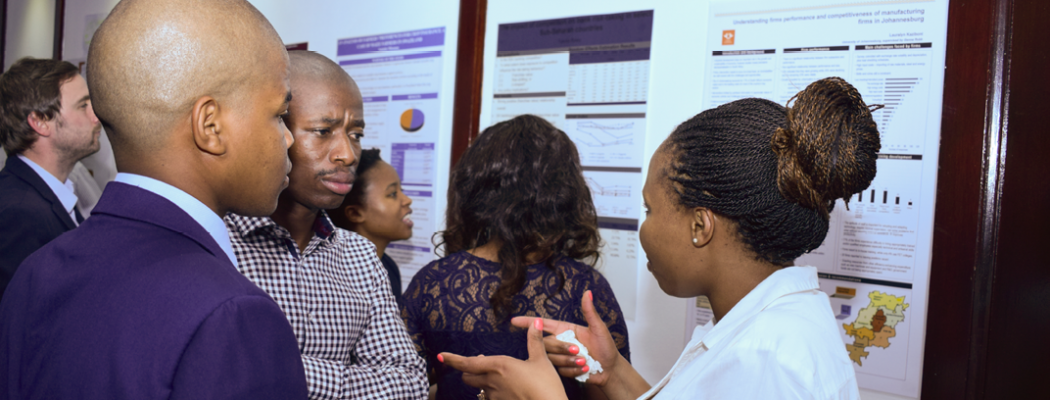High wage inequality in South Africa – are employers to blame?
South Africa ranks as the world’s most unequal country by income. This is largely due to high wage inequality, given that wages are the main income source for the majority of the working population. Exploring the nuances of this inequality prompts a critical question: what is the extent of employers' role for these outcomes?
Researchers have investigated the reasons why some workers are paid significantly more than others. So far, this research focuses mainly on worker characteristics, such as education and experience. One reason often given for the disparity in wages, for example, is differences in workers’ education levels.
However, new research also highlights how employers contribute to South Africa’s wage inequality. A recent study by Ihsaan Bassier finds that employers have a lot of power over how wages are set. South Africa’s high unemployment means that there is very little competition between employers for workers, so employers can set wages without fear of losing their employees. In this environment, workers with identical skills and education can be paid very different wages, depending on where they work. In my own study as a part of the SA-TIED programme, I add to the ongoing conversation by detailing the types of firms which tend to set higher wages. I look at a range of firm characteristics—such as profits, location, and industry—and use tax authority data to determine how these characteristics might relate to wages paid.
Employers’ influence on wage inequality
My findings reveal a stark reality—South Africa’s wage inequality is more than twice that of comparable countries. As workers move between employers, an unusual pattern unfolds. Their wage levels are not only about their education or skill level, to a considerable degree, the employer wage premium is a major factor. In South Africa, I find that this premium is responsible for nearly 20% of the country’s wage inequality. While South Africa’s employer premium is smaller than that found in high-income countries, such as Canada, Japan, or the United States, by accounting for almost one-fifth of the differences in wages, it is clear that employers play an important role South Africa’s wage inequality.
To determine what proportion of wage inequality is due to employers compared to worker characteristics, I examined the wages of workers who move from one employer to another. When a worker leaves one employer for another, and receives a different wage, it is unlikely that the change is due to worker characteristics such as education, skill level, or productivity. This difference is called the firm, or employer, wage premium—your wages are determined solely by which employer you work for.
Another key driver of wage inequality, accounting for one-tenth of wage inequality, is the relationship between highly skilled workers and high wage-premium employers. Highly skilled workers are attracted to firms that pay high wages. As such, workers who would already be highly paid, based on their education or skill level, tend to be concentrated in firms that have high premiums. This bunching of highly skilled workers into high paying firms, alongside the disparity caused by employer wage premiums, accounts for approximately 30% of South Africa’s wage inequality.
Which firms have the highest wage premiums?
A deeper dive into the dynamics between workers and employers reveals not only the impact of the employer wage premium, but also the intriguing relationship between skilled workers and high-paying firms. There are several employer (or firm) characteristics that influence the level of the wage premium and therefore the extent of wage inequality. These include the size of firms, industries within which they operate, profitability, geographical location, and whether firms are locally or foreign owned.
Contrary to what is found in high-income countries and other middle-income countries, the largest firms do not have the highest wage premiums in South Africa. As Figure 1 shows, the wage premium paid by some small firms is higher than that paid by large firms. The differences across industries provide some insight into this finding.
While in some industries larger firms do pay higher premiums—such as financial services, manufacturing, and utilities—in other industries, such as agriculture, it is small firms that offer the highest premiums. The small-firm wage premium is driven by ‘small-scale, high value and capital-intensive agricultural farms’ and contributes to the agricultural sector having the highest level of wage inequality relative to all other industries, despite several increases in the industry minimum wage.
Figure 1: Firm wage premium by firm size, 2011 and 2019

In addition to industry-level wage premiums, firms operating in Gauteng—the province in which South Africa’s capital city (Johannesburg) and business and administrative hubs are located—have the highest firm wage premiums. These premiums directly influence the level of inequality and therefore contribute to Gauteng being among the provinces with the highest levels of wage inequality in South Africa.
As expected, more profitable firms also exhibit larger wage premiums. Foreign-owned firms also have considerably higher wage premiums, relative to locally owned firms. As illustrated in Figure 2, both average and median wages in foreign-owned firms are up to two times higher than wages in locally owned firms. This may also be indicative of a greater capacity for employers in foreign-owned firms to pay higher wages, given potential access to more sources of funding from parent companies abroad.
Figure 2: Average and median wages—local and foreign firms, 2011–19

Decoding wage disparities
This study emphasizes that it is not just worker characteristics such as education, skill levels, or experience that determine how much workers are paid. Employers also play a major role in defining the level of wages and therefore have considerable influence over the extent of wage inequality.
While the employer wage premium might be more difficult to target, efforts to minimize or equalize these premiums can have positive implications for both employment and wage inequality in South Africa. My study demonstrates that some workers are paid less than others, of similar skill and ability, just because of where they work. Continued research in this area is needed to explain what drives this disparity and how best to minimize it.
The views expressed in this piece are those of the author(s), and do not necessarily reflect the views of the Institute or the United Nations University, nor the programme/project donors.


